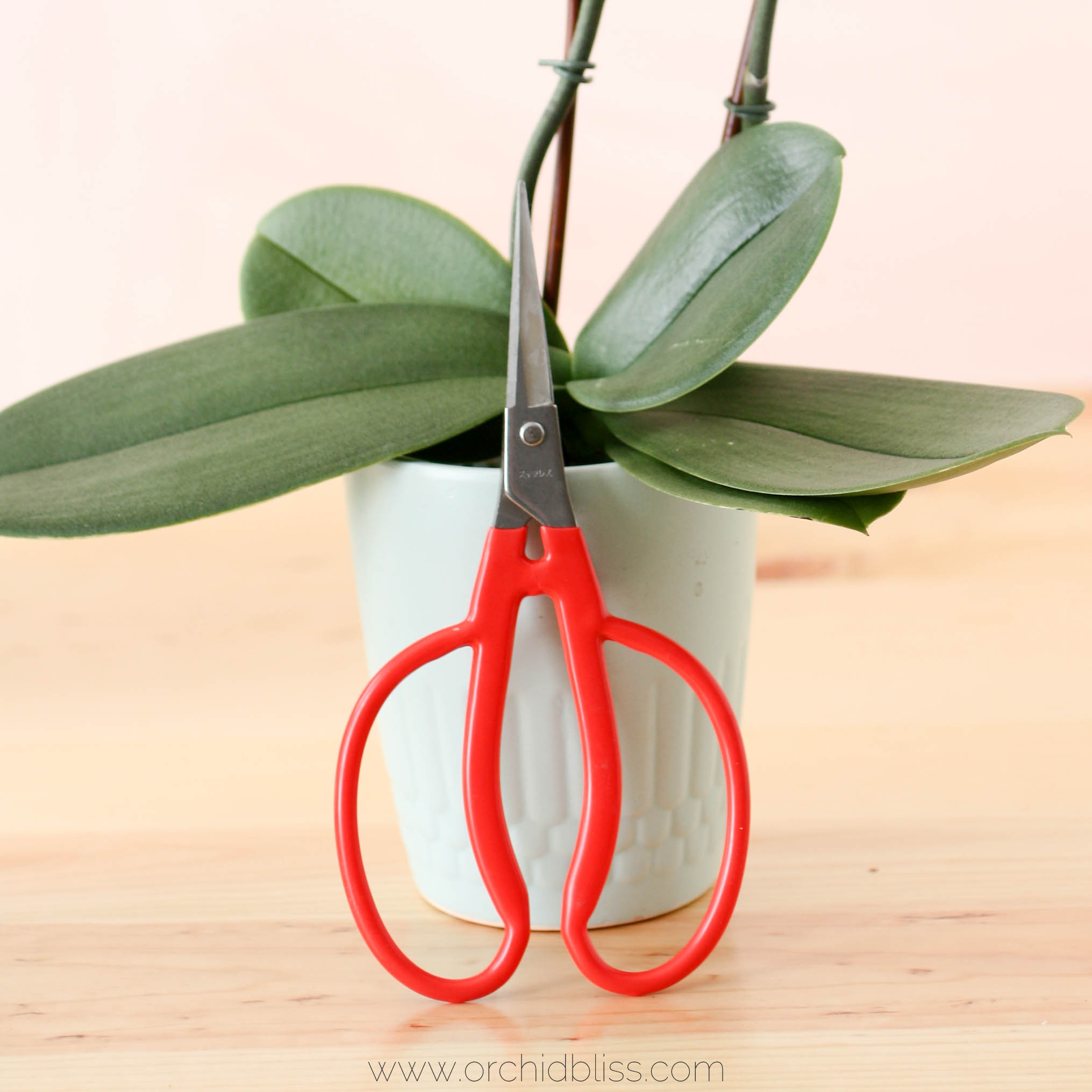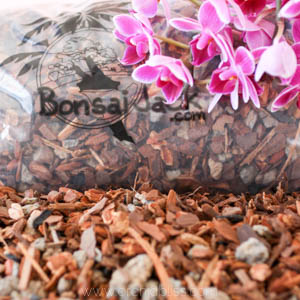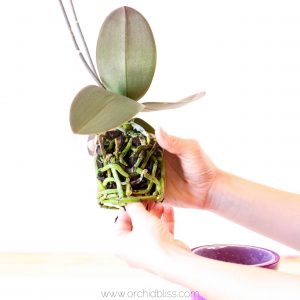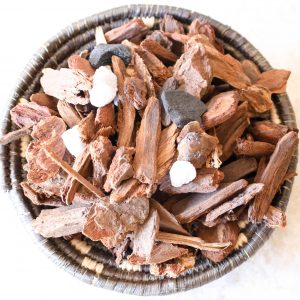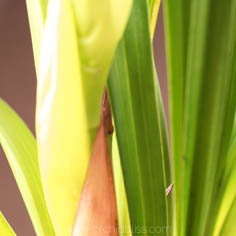
I’m guessing you found this article because you want to know why your orchid’s leaves are turning yellow – and what to do about it. What you may not know is that for some orchids, yellowing leaves is completely normal.
Yellowing leaves can indicate several different problems: aging, too much sun, too much or too little water, a temperature drop, a nutritional deficiency, pests or disease. While it is true that yellow leaves can be a sign of trouble – for deciduous orchids yellowing leaves is expected. If all the leaves and new growth are turning yellow that’s a clear indication that all is not well.
Read on to find out how to identify why your orchid leaves are turning yellow – and how you can fix it.
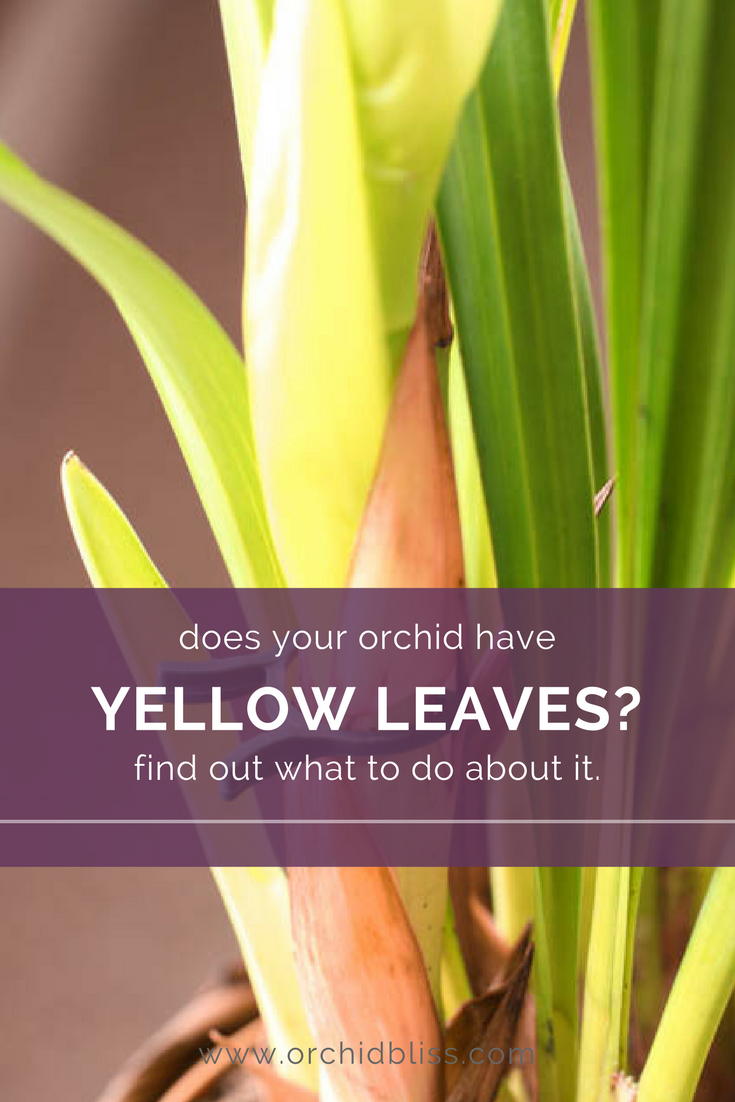
Some of the links on this page may be affiliate links. Click here to learn more.
Aging Leaves
It is normal for older orchid leaves to turn yellow, shrivel up and die. New leaves will grow and take their place. If it is only the lower older leaves that are yellowing, then you don’t have a problem. This is just part of an orchid’s natural growth cycle.
Action: With a pair of sterilized pruning shears, carefully remove the old, withered leaf.
Too Much Sunlight
Too much sun can cause orchid leaves to turn yellow. Before assuming that your orchid is getting too much sun, find out what color your orchid leaves should be. Cattleyas, for example, bloom best when their leaves are a light, bright green.
Cymbidiums require a lot of light. Usually, as much light as you can give them if you are growing them indoors. It is possible that your orchid was given too much light before you got it. If you are growing your Cymbidium outdoors, assuming you live in a temperate climate, place the orchid where it will receive filtered sunlight.
Phalaenopsis orchids like bright, but indirect light. If these orchids receive too much light, their leaves will burn.
Action: If you believe your orchid’s leaves are turning yellow from too much sun, remove the yellow leaf with sterilized pruning shears. Next, place the orchid further from the window where it will receive bright, but indirect light.
Water – Too Much or Too Little
The leaves of overwatered orchids will turn yellow and drop as the orchid tries to shed water by dropping leaves as the roots absorb too much water. Overwatering not only leads to leaf drop but also to root loss.
Organic potting media, such as fir bark, is great for potting orchids because it allows for airflow around the orchid’s roots and because it is fast-draining. As fir bark begins to break down it becomes more absorbent and compacted – which leads to overwatering, and less oxygen to the orchid’s roots.
Action: Allow the potting medium to dry out, or almost dry out between watering. In addition, check the potting media to make sure it has not decomposed. If the potting media is beginning to break down, it’s time to re-pot.
How to Quickly Identify the Difference Between Healthy and Unhealthy Orchid Roots
Healthy Orchid Roots | Unhealthy Orchid Roots |
|
|
Temperature Drops
If there is one thing that orchids can be finicky about its temperature. Many of the orchids that we grow indoors are great houseplants precisely because they like indoor temperatures. If the orchid gets too cold – its leaves will turn yellow and fall off.
Action: Keep your phalaenopsis orchids between 70 – 80º F/26.7º C, with about a month of intermediate temperatures 55°- 60º F/ 13°- 15.6º C in the winter to trigger blooming. Warm-growing dendrobiums such as kingianums are great easy-to-grow orchids, but don’t let their temperature drop below 41° F / 5° C in winter. If you are growing your orchids indoors, this shouldn’t be a problem, but just be aware.
How to Know When Yellow Leaves and Leaf Drop Is Normal
Many orchids such as some Dendrobiums (nobile), Catasetum, and Lycastes are deciduous. This means that the leaves turn yellow, fall off, and go dormant for the winter. Then in the spring, the orchids begin to grow new leaves, roots, and flowers.
One clue that you are growing a deciduous orchid is that the leaves gradually turn yellow and gradually fall off – as opposed to all the leaves turning yellow all at once and then quickly dropping off.
Nutritional Deficiency
Sometimes yellowing leaves indicate a lack of nitrogen or iron. On my orchids I use DynaGro. For yellowing leaves use Foliage Pro. This fertilizer has a nitrogen content of 9%.
Action: For orchids with yellow leaves due to a nutritional deficiency, dilute the fertilizer recommendation by 1/2 to 1/4 of the recommended dosage, mix with water and apply 3 out of 4 weeks in a month. Remember to always use a light hand when fertilizing orchids.
Small Bumpy Brown or White Circles on Orchid Leaves
Uh-oh, it sounds like your orchid may have scale insects. The faster you treat scale and keep it from spreading the better.
Action: If the bumps don’t come off, you don’t have scale. Instead, treat the orchid for a bacterial or fungal infection using horticulture oil.
Action: Isolate affected orchids. Then, using a toothbrush, or even a Q-tip dipped in 70% alcohol scrub off the bumps. Scrub every imaginable nook, cranny, and crevice including leaves, sheaths, and even rhizomes. Finish by spraying the orchid with horticulture oil.
If the bumps don’t scrub off, it is more likely you have a fungal or bacterial infection. See below to learn how to identify and treat.
Diseases – Fungal or Bacterial
Many times fungal and bacterial infections can begin on leaves as yellow spots or patches that eventually turn black. Additionally, new growth that turns yellow is an indication of bacterial rot.
Action: Remove the yellow leaf, pseudobulb, or stalk with sterilized shears. Spray with horticulture oil. Pray.
TIP: An often under-appreciated, but important way to prevent fungal and bacterial infections is to increase air movement around the orchid. There are several ways you can do this. If the weather is nice, open a window. If you have a ceiling fan, turn it on. Or, simply turn on a small portable fan, set to low, and pointed away from the orchids. All of these methods will do the trick.
Another easy way to help prevent fungal and bacterial infections is to take care when watering to keep water from splashing on the orchid’s leaves.
Color Streaks or Color Breaks In Orchid Leaves
Much more serious than yellowing or dropping leaves is when there are color breaks in the leaves which can indicate a virus. The problem is that viruses can be difficult to distinguish from other leaf discolorations. Rather than a virus, the orchid may simply need more light or may have a nutritional deficiency. Sometimes viral symptoms may be nothing more than yellow or white streaking across the leaf. Other times you may see deep streaking or bands of dark brown or black discoloration that appears deep within the leaf tissue.
Unfortunately, the only way to positively identify viruses is by sending in a tissue sample into a lab – or to buy a kit. For most of us, the best way to take a close look at the discoloration and assume that if the streaking is more on the surface, it’s likely fungal. But if the discoloration seems to be more inside the leaf tissue, it could be viral.
Action: First, keep the suspected orchid isolated from your other orchids. Do not share tools between infected orchids and other orchids. Second, consider disposing of the orchid. If the orchid is very special – continue to take precautions to keep the orchid away from your other orchids. Third, prevent spreading by sanitizing tools – especially pruning shears – after each use.
Sterilize shears with a small butane torch by passing the shears through the flame for about 5 seconds. I use a kitchen torch to sterilize my shears and it works great. Another sterilization method is to wipe the blades down with rubbing alcohol.
Patiently Await Results
Now that you know what may be causing your orchid’s leaves to turn yellow and you know what action to take, be aware that it will take a while for the orchid to recover. Your orchids will thank you, but don’t expect immediate results.
Improper watering often causes a host of problems, resulting in an unhealthy orchid. To avoid these pitfalls, click here to grab your cheat sheet to learn how to grow healthier orchids. It will be super helpful.


